Besides holding a lot of sentimental value, is your 1953 nickel worth more than five cents? We hate to break it to you, but it’s probably not.
Sure, there’s a 1953 nickel that went for more than $20,000 in 2019, but that’s just because it looked like it came out of the mint the day before (MS65). A clean 1953 Jefferson nickel will probably get you a nice dinner today. You’ll make many friends if it’s immaculate and has a mint error.
Keep reading this guide to figure out factors that make a 1953 nickel worth more than its weight in gold. Let’s grind.
1953 Jefferson Nickel Value Chart
Let’s start with the facts before we get to the good stuff.
1953 is a year riddled with fantastic history. Queen Elizabeth got her crown, Elvis Presley recorded his first song, and over 160 million 1953 nickels were minted.
Here are the exact numbers of Jefferson nickels produced in 1953 in the various mints and their estimated values if they are in mint state and with all five stairs of the Monticello:
| 1953 Nickel Value | |||
| Mint and mint mark | Circulation | MS Quality (60-70) | Value Range |
| Philadelphia (No mint mark) | 65,640,250 | 1953 5c MS | $0.30–$2,810 |
| 1953 5c MS FS | $1,630–$7,500 | ||
| Denver (D) | 72,705,660 | 1953-D 5c MS | $0.30–$1,150 |
| 1953-D 5c MS FS | $68.00–$6,250 | ||
| San Francisco (S) | 23,844,000 | 1953-S 5c MS | $0.30–$1,880 |
| 1953-S 5c MS FS | $2,000–$19,200 | ||
It stands to reason that you might get a flaw or two in some of the nickels, considering how many were minted. Mint errors are rare and significantly increase the value of your 1953 nickels, even if they are not in the mint state category.
Most 1953 Jefferson nickels fall under the G (good) category because they are 70-year-old-circulated coins with notable wear. It would be a hard sell to convince anyone to buy a worn-out coin that’s still in circulation for more than its face value.
Proofs (denoted as PR), of which the Philadelphia Mint made about 129,000 in 1953, can also have errors. These are coins made to check dies and for archival purposes.
On top of being rare, proof coins usually have a mirror-like finish and exquisite details, such as having full steps (FS): 5 stairs for 1953 nickels on the Monticello building.
Auction Records and Notable Transactions of 1953 Jefferson Nickels
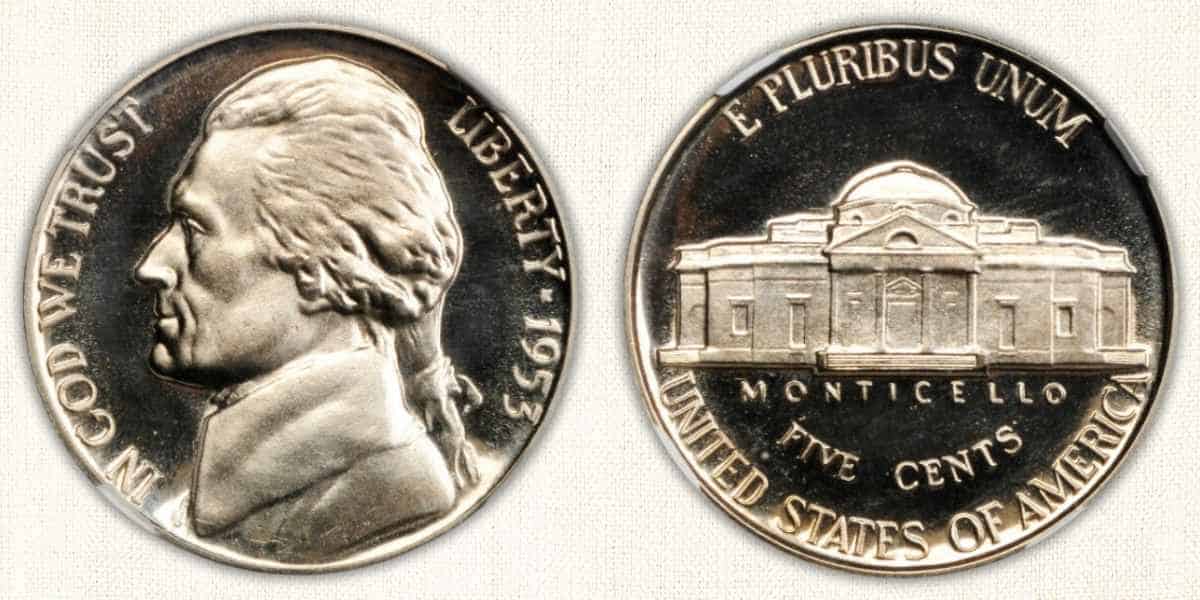
Some 1953 nickels are worth their weight in gold and silver because they are rarer than hen’s teeth.
The price difference between an MS-66 and an MS-67 1953 nickel is staggering. A credible coin grading service like PCGS or NGC can distinguish fine details and certify your coin’s grade.
Here are highlights of some of the record prices 1953 Jefferson nickels went for at auction:
| Coin | Grade | Sold by | Price |
| 1953-S | MS65 | Heritage Auctions | $24,000 |
| 1953-S | MS67 | Great Collections | $3,410 |
| 1953 | MS 68 DCAM | Legend Rare Coin | $4,700 |
| 1953 | PR 68 (Proof) | Heritage Auctions | $15,275 |
| 1953 | PR 68 | Heritage Auctions | $13,800 |
| 1953 | MS 66 | Bowers & Merena | $8,050 |
As you can see from the table above, some 1953 nickels go for more than many people’s monthly salary because they shine bright like a diamond.
However, this is a 1953-D nickel struck on a planchet cent, meaning it’s a nickel pounded on a penny, making it special.

It’s seemingly insignificant at first glance, but this treasure’s worth its weight in gold. It sold at auction for $431 in August 2010. Can you imagine its value if it was in a mint state?
Design and History of 1953 Jefferson Nickels
Felix Schlag won an open competition to design the Jefferson nickels in 1938. Successive five-cent coins have yet to veer far from the blueprint, and the 1953 version is no exception.
The obverse has a bust of Thomas Jefferson. The reverse has the Monticello, Jefferson’s home.
For the most part, you can differentiate the Jefferson nickels by looking at embossed signs highlighting the year the coins were minted and where.
The mint location inscriptions are on the reverse to the right of the Monticello building—no mint mark (Philadelphia), S (San Francisco), or D (Denver). There’s not much discrepancy in value when considering where a nickel was minted in 1953.
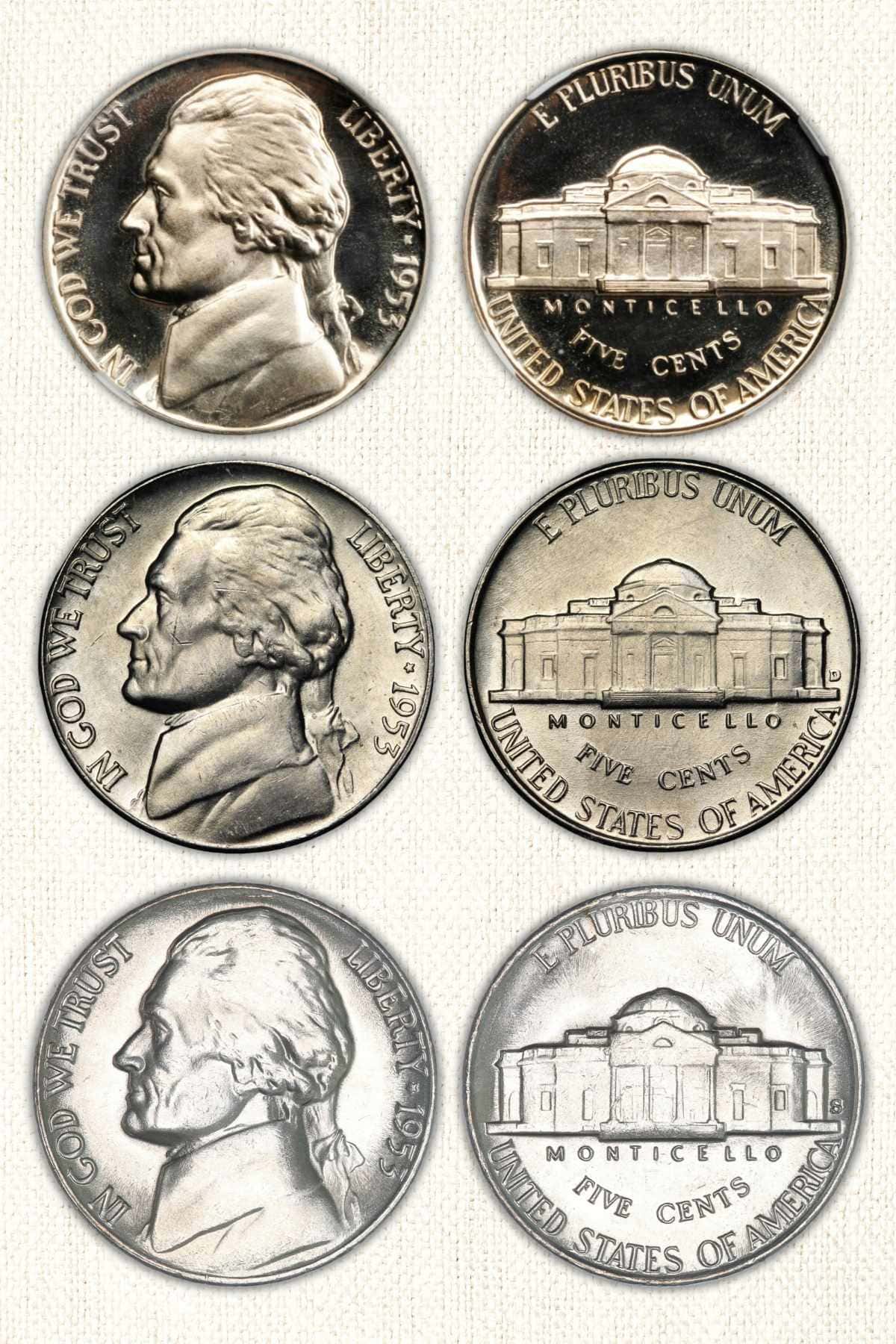
Physical Features of 1953 Jefferson Nickels
The Jefferson nickel has the following features:
- Diameter: 21.21 mm
- Thickness: 1.95 mm
- Weight: 5 grams
- Composition: 75 % copper, 25% nickel
- Edge: Clear and smooth
Valuable Errors of 1953 Jefferson Nickels
Here are some of the defects or manna from heaven you might get in your 1953 nickels:
1953 Jefferson Nickel with Lamination Error
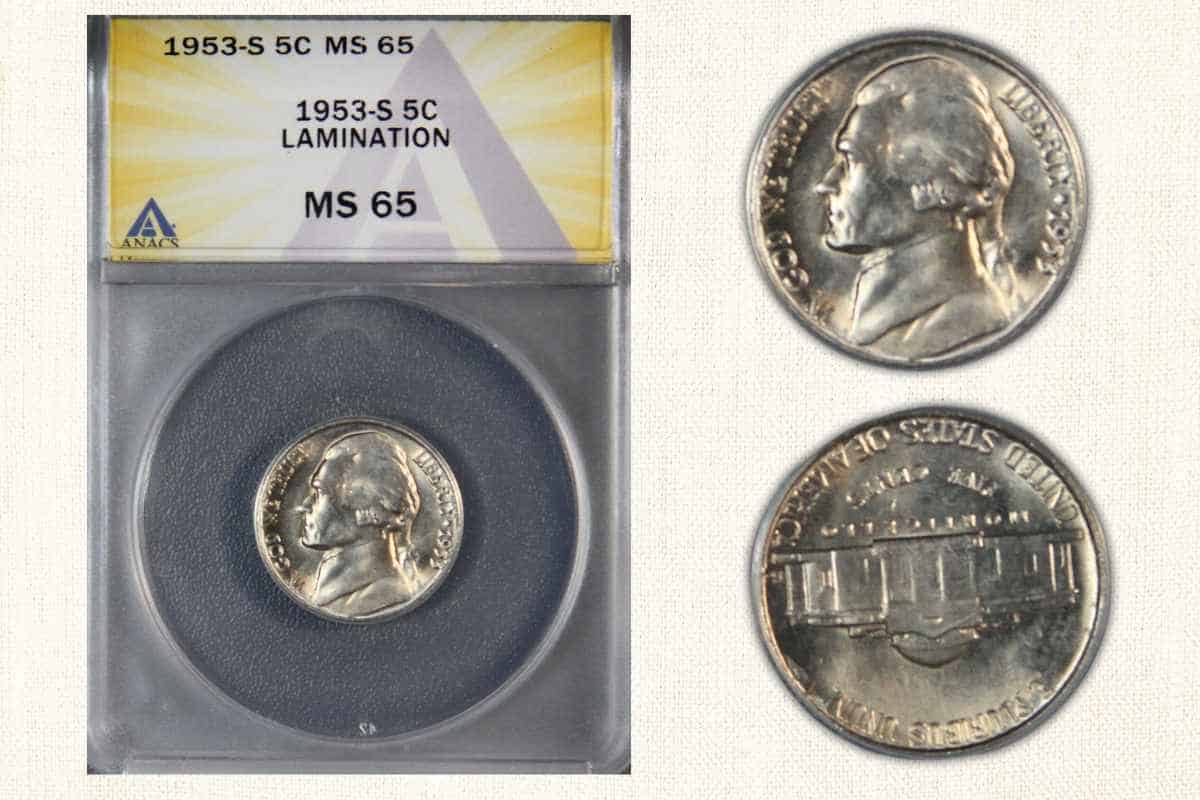
Sometimes, impurities find their way into the copper and nickel mix. This blunder makes the metal weak and brittle, so it might crack or peel when it cools. The lamination error defect makes the nickel look like it has a lousy flake condition.
Here’s a 1953-S Jefferson nickel with a lamination error graded as MS 65 going for $199.
1953-D Jefferson Nickel with Re-Punched Mint Mark (RPM)
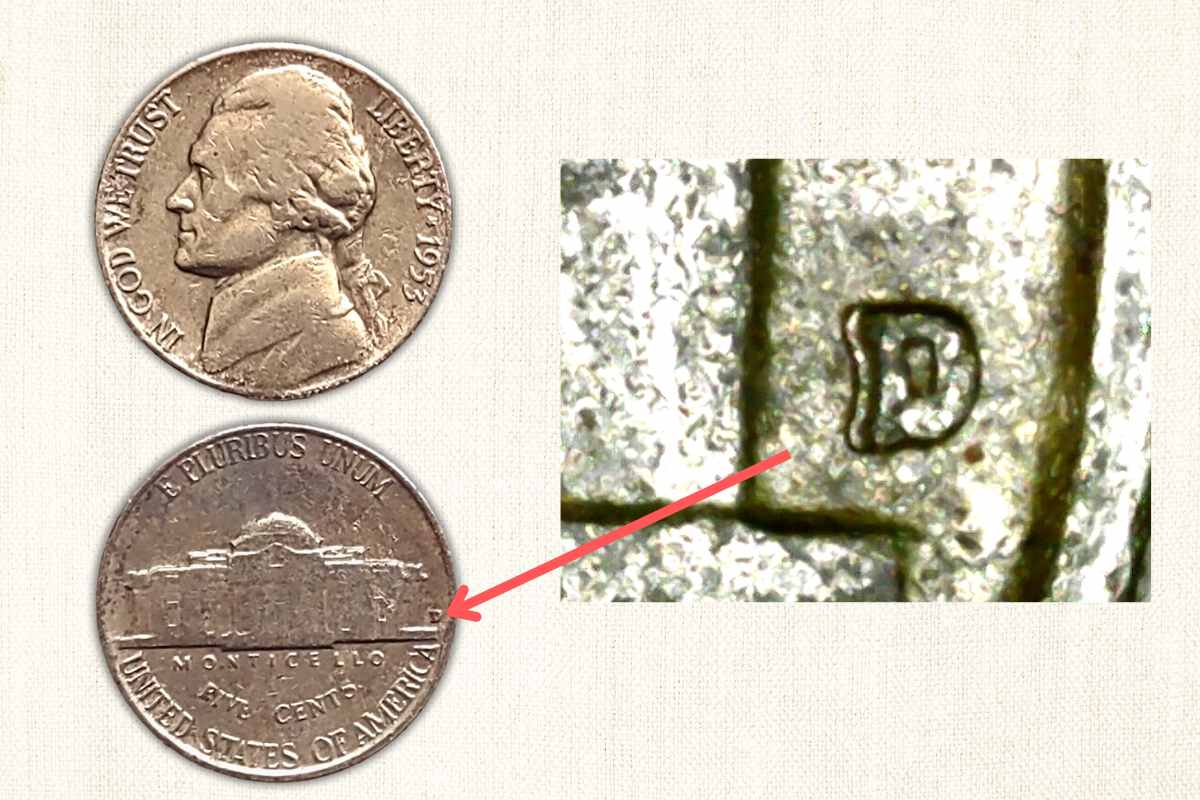
The D or S mint mark shows where the coin was produced. However, staff at the mint might carelessly stamp the letter twice, in the wrong place, upside down, or where it shouldn’t be. This kind of mistake makes the punched mint mark appear blurred or doubled.
This is a 1953-D Jefferson nickel with a double-struck mint mark error. The seller describes it as being “good,” and it’s offered for sale at $14.99
1953-D Nickel Cud Error
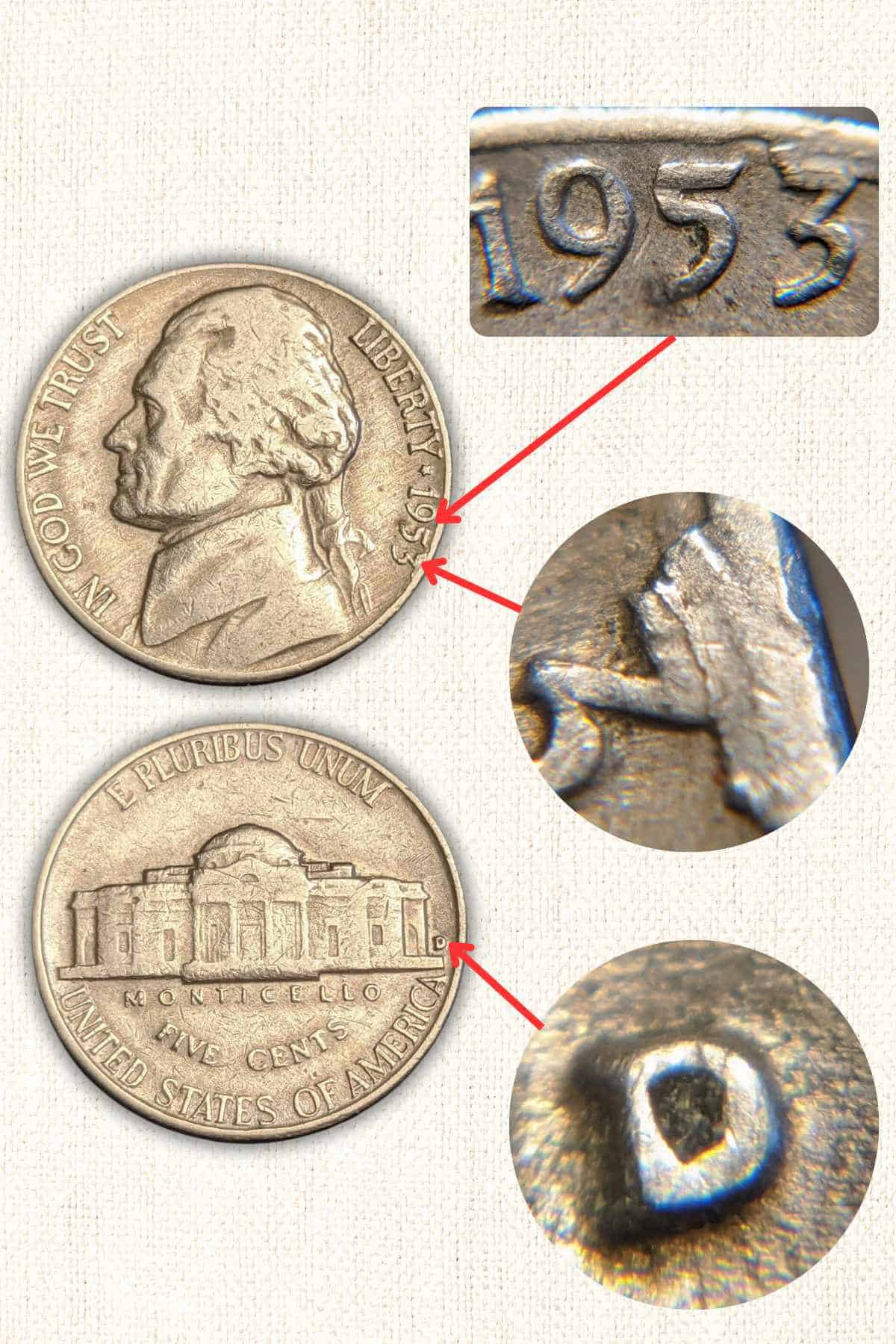
This defect occurs if the die is faulty, punching the coin with a dent or raised portion. These errors can be big or small, depending on how the die was destroyed.
Here’s a 1953-D Jefferson Nickel with a die-cud error. It’s described as “Extremely RARE,” yet it’s going for only $15.
1953-D Jefferson Nickel Strike-Through Error

This flaw happens when a foreign object like a wire, dust, or even grease from the machine gets in the way as the die hits the nickel. The foreign object leaves a dent in the coin or sometimes changes its color or shape.
This isn’t a nickel, but it’s a 1953-D penny. You might get such an error on a nickel, and rest assured, it will sell for a lot if this is going for $485
1953-D JEFFERSON NICKEL D Over Inverted D Mint Mark
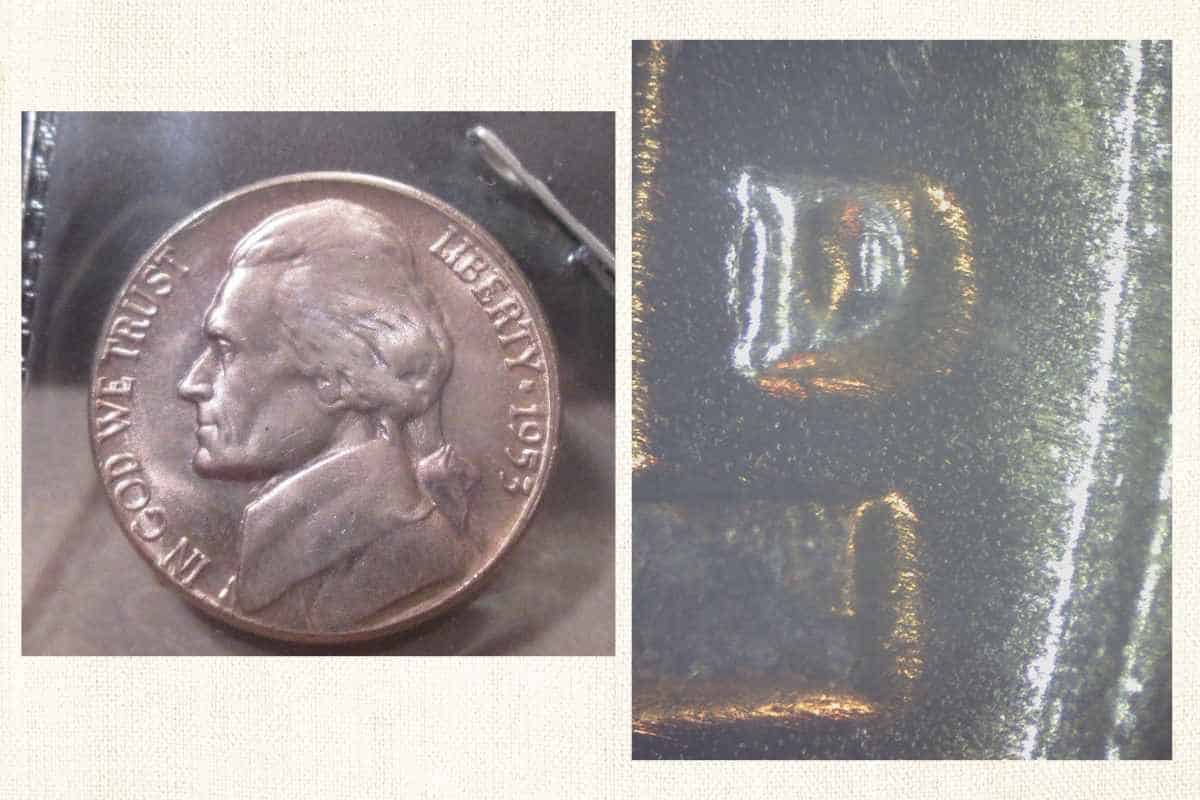
In this case, the mint punched a D on top of another D below it. You might have stuck gold if you dig deep and get the rare inverted mint mark from the Denver Mint.
This picture showcases a 1953-D nickel with a Dover inverted D. The coin is described as brilliant, uncirculated (BU), going for $346, a discount price.
953-D Nickel Over Mark Mint Error (D Over S)

There are rare occurrences of 1953 nickels where the mint mark might appear as an overlap of S and D. This small error makes such coins worth their weight in gold. A mixed mint mark looks like an “S/D,” making the coin valuable, especially if it’s immaculate.
Despite this 1953 D over S nickel being in “good” condition, it’s listed at $200, but you can make an offer.
1953 S Jefferson Nickel Double Obverse Errors
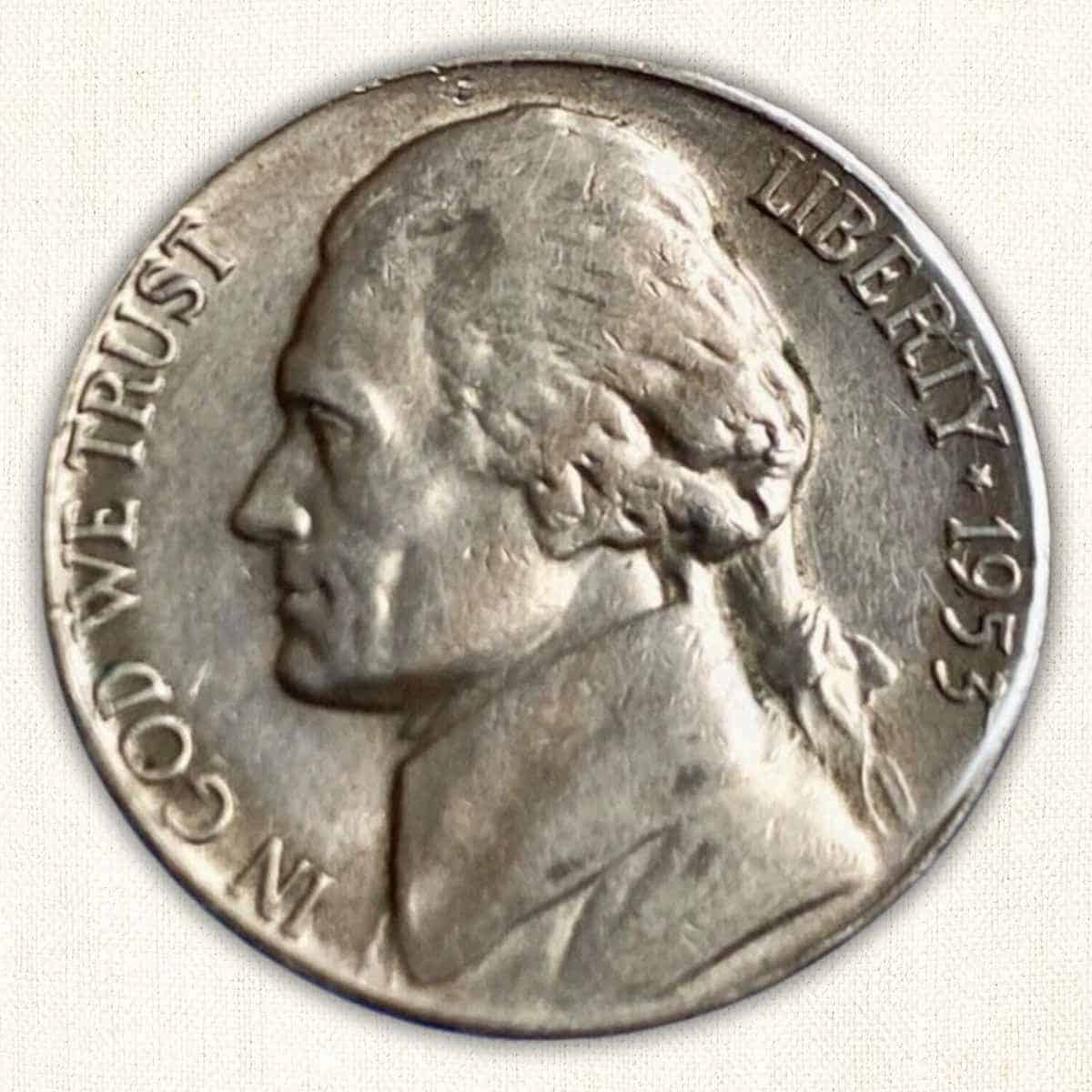
Double obverse flaws occur when something like Jefferson’s face is slammed on the coin more than once. This misprint error creates two or three images, making them look like an overlay. Misprint errors are hard to find, making the coin valuable, especially if it’s in good condition.
This price for the obverse error coin in the images below is a discount if it’s true that it’s uncirculated. This collectible’s going for just $20, and you can make an offer.
A Grading System for 1953 Jefferson Nickels
Jefferson nickels are rated from Poor (P) to Mint State (MS), like most coins. The rating system created by the Numismatic Guaranty Corporation (NGC) indicates how well-preserved the coin is.
NGC ranking considers how worn out the coin is, how deftly it’s struck, and its luster, color, and shape.
| Grading Scale | Numerical Grade Range |
|---|---|
| Poor (PR) | 1 |
| Fair (FA) | 2 |
| About Good (AG) | 3 |
| Good (G) | 4–6 |
| Very Good (VG) | 8–10 |
| Fine (F) | 12–15 |
| Very Fine (VF) | 20–35 |
| Extremely Fine (XF) | 40–45 |
| About Uncirculated (AU) | 50–58 |
| Mint State (MS) | 60 (lowest) to 70 (perfect) |
A rating of 1 means the coin’s so worn out that it’s barely recognizable. Heck, some stores might even reject it as a legal tender.
You’ll mostly want to look for a 1953 nickel in the mint state category (60-70) for a good price. These coins have razor-sharp details. Unfortunately, we can’t have a perfect coin (70) because we don’t have the technology to preserve them in that condition.
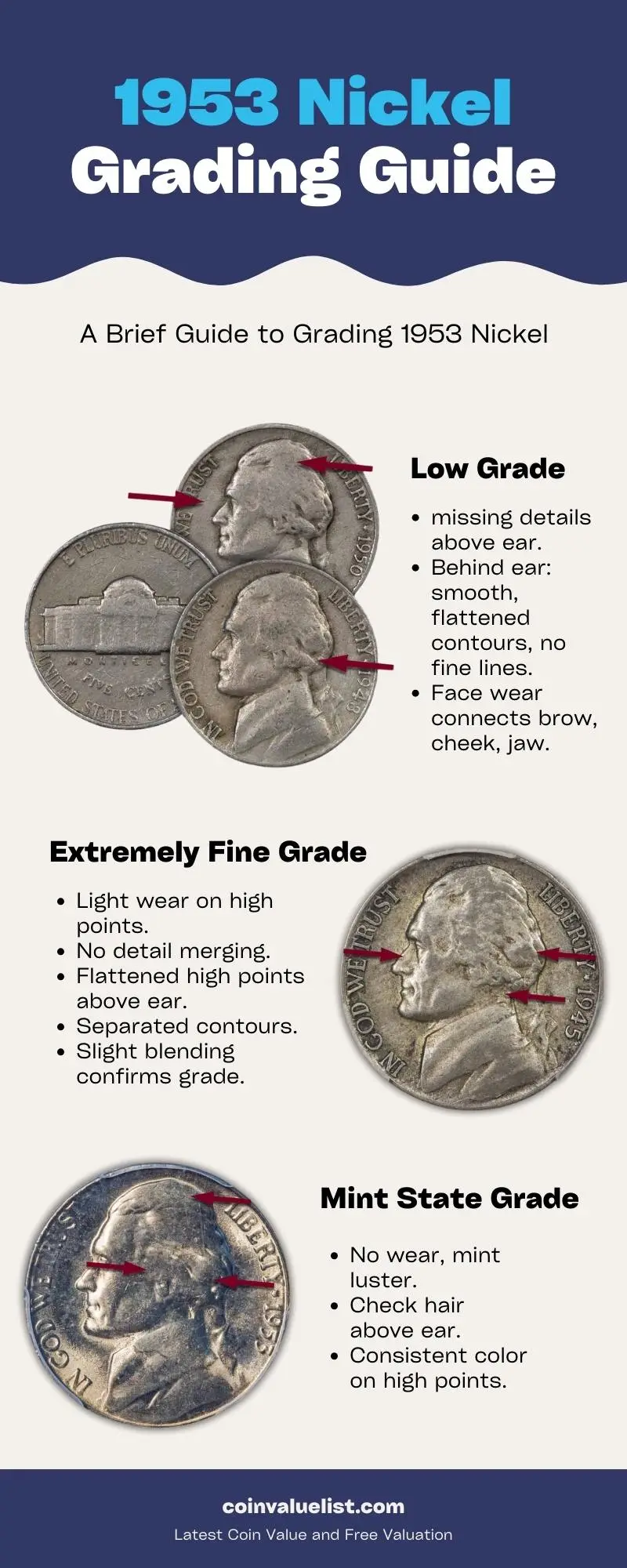
Back to the bone of contention, there’s a massive variance in value for coins falling under 60 to 70 rating when it comes to 1953 nickels.
A single point can mean the difference between four and five figures. For example, this proof coin with a 68 rating went for $13,800, while this mint state coin rated 66 went for $8,050.
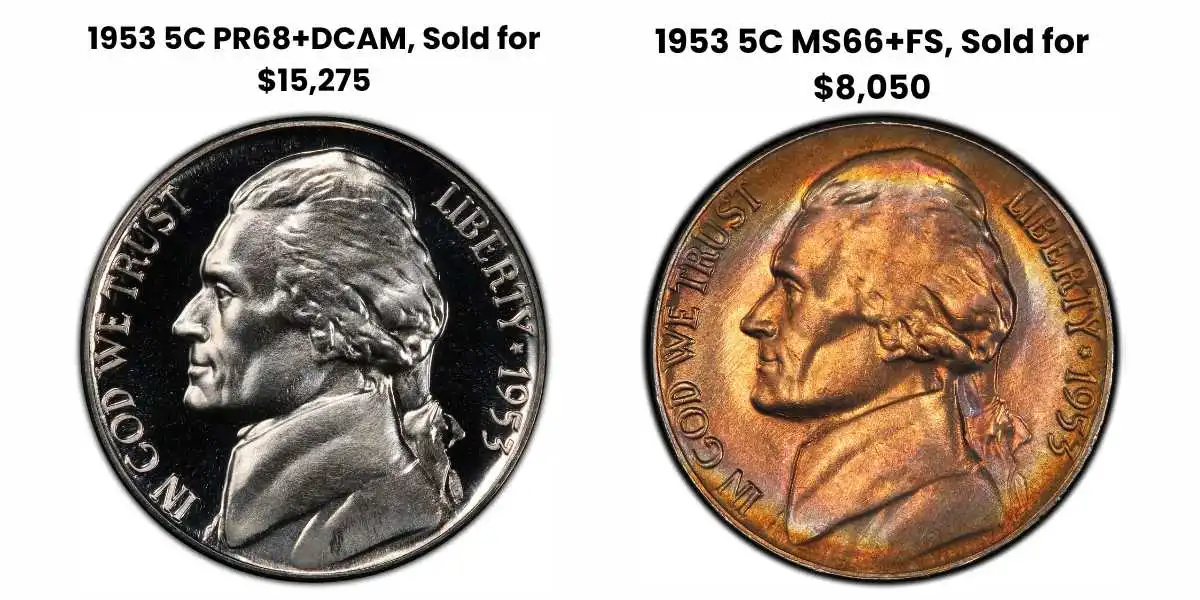
The Holy Grail in the 1953 nickel category is a mint state coin with five full steps (denoted as FS) on the Monticello house. This intrinsic detail might be missing on a mint-state coin when it’s produced because the dies strike many times and lose it. The steps are more likely to be present on a mint-state-proof coin from the Philadelphia Mint.
We have yet to see a mint state 1953 nickel with an error sold at a public auction. If it ever crops up, you can bet it will be featured in a segment on a reputable news channel.
Supply and Demand Trends for 1953 Jefferson Nickels
1953 was a remarkable year that saw Queen Elizabeth crowned, Eisenhower starting his tenure, the Korean war came to an end, the first corvette rolled out, Mount Everest was conquered, human DNA outlined, we got a polio vaccine, Burger King opened its doors, Elvis Presley recorded his first song, and more than 160 million nickels were minted.
With all those delightful historical events considered, it only stands to reason that there’s a sentimental value to any artifact from 1953.
Many 1953 Jefferson are in circulation because they were made in their millions. Some of these coins have more than their face value if they have an error from the mint or still have sharp details. Hold on to them if you can because the values of these special coins will only go up.
FAQs
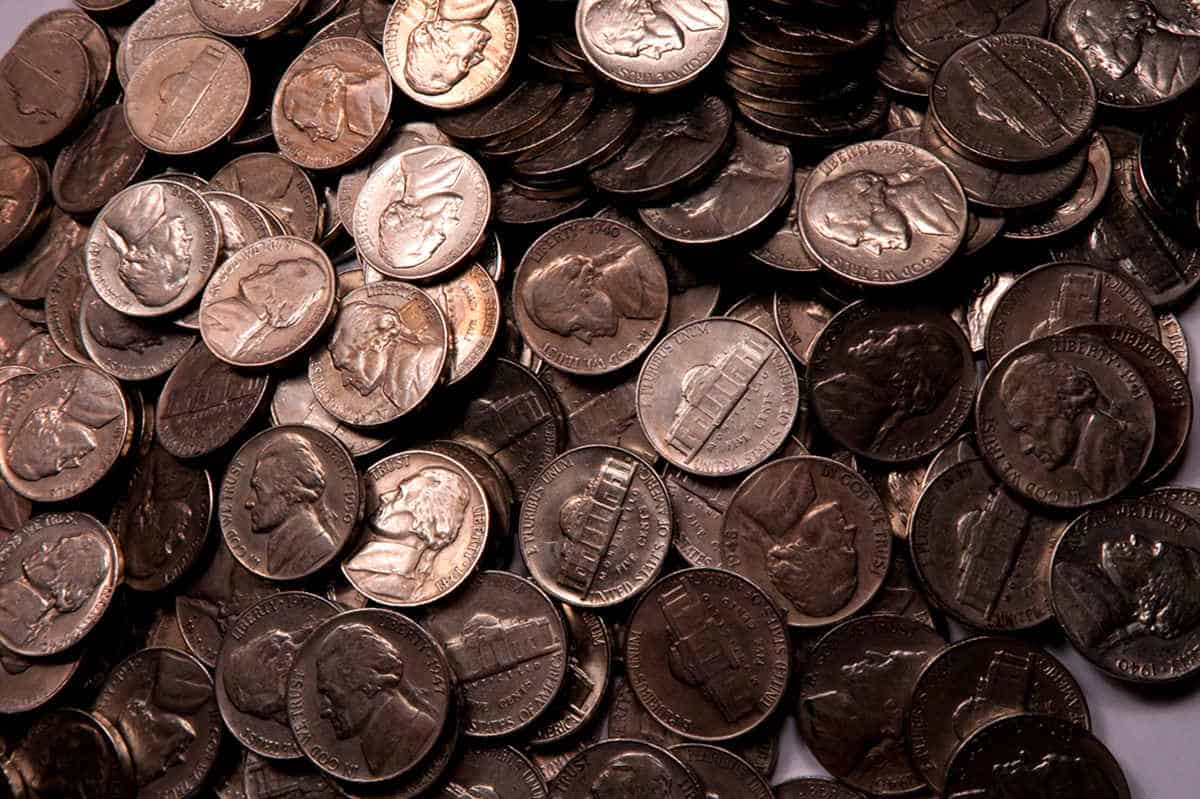
What Material Are the 1953 Jefferson Nickels Made of?
1953 Jefferson nickels are made using 75% copper and 25% nickel. These are the primary materials used for coins in the US since 1946. However, mints changed the material composition during wartime because nickel and copper were in demand.
In those treacherous years, some mints even had to incorporate silver or gold into their coins. However, you won’t get much from melting a 1953 Jefferson nickel because its melted value is only $ 0.0596.
Where Can I Buy or Sell 1953 Jefferson Nickels?
You can use many avenues to buy or sell your 1953 Jefferson nickels. You can engage fellow numismatics, look into coin shops, or sell them at auction houses.
The world’s your oyster when it comes to selling coins online. A quick Google search or eBay should allow you to trade your currencies swimmingly.
However, take your time when buying or selling your nickels. Look at market prices and ensure you get the real deal.
Conclusion
Now you know how to gauge if your 1953 nickel is worth more than its face value. It’s not only a piece of history; those with the right attributes or errors might give you a small fortune.
Keep your 1953 nickel treasure safe if it’s in near-perfect condition. It will almost always rise in value.
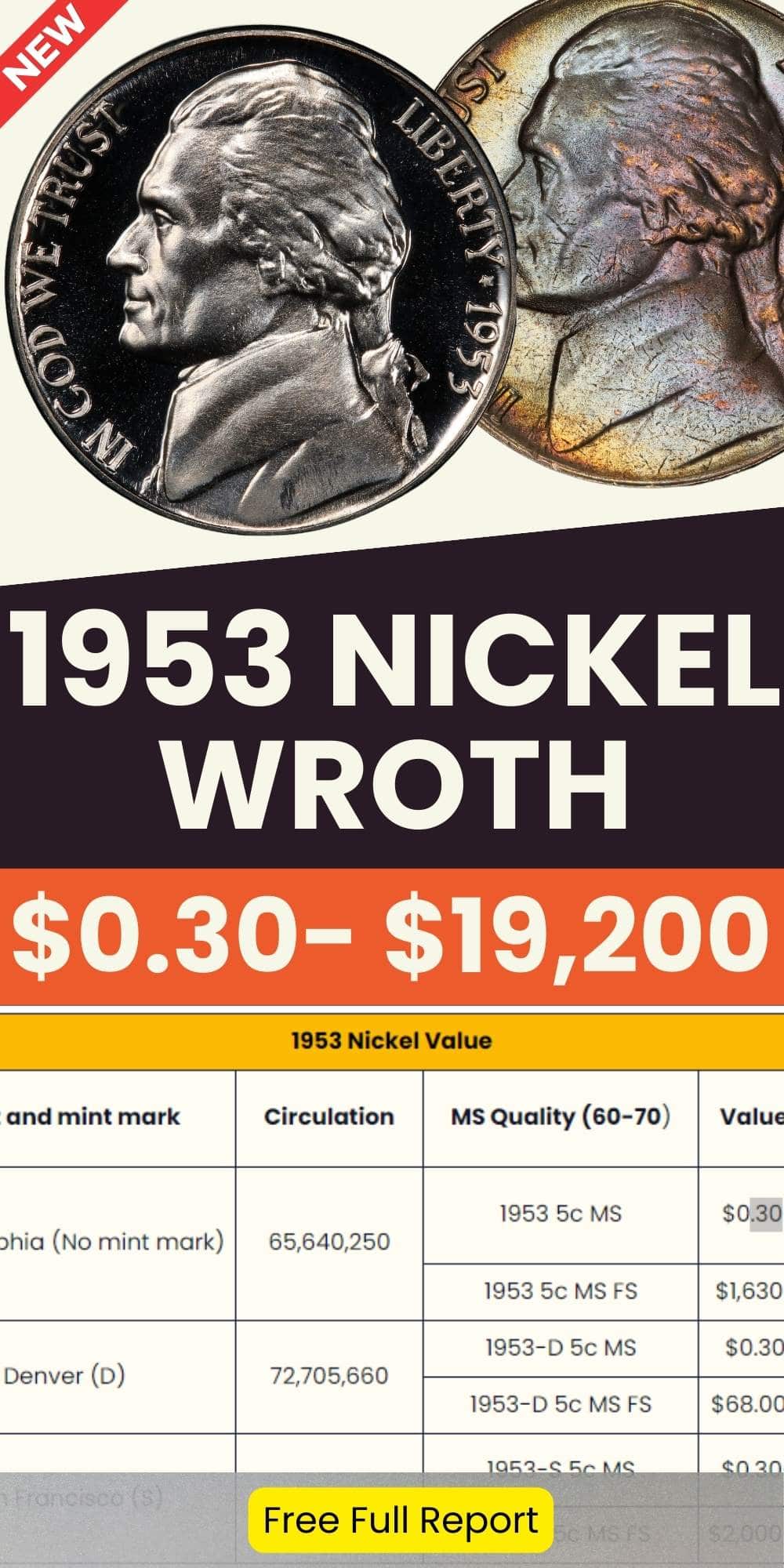

Jenson is a professional numismatist, a dedicated coin collector, a graduate of the College of Business at Oregon State, a life member of the American Numismatic Association (ANA), and an overall coin nerd. He is the founder of Coin Value List.
